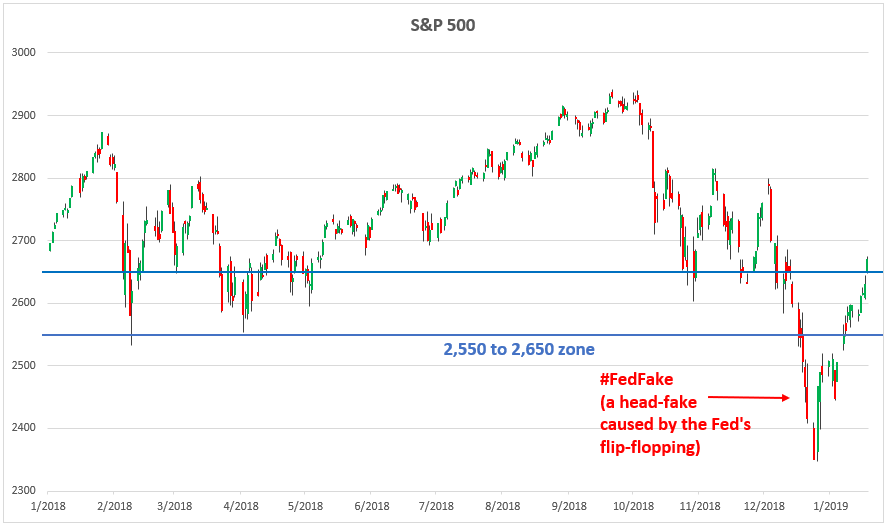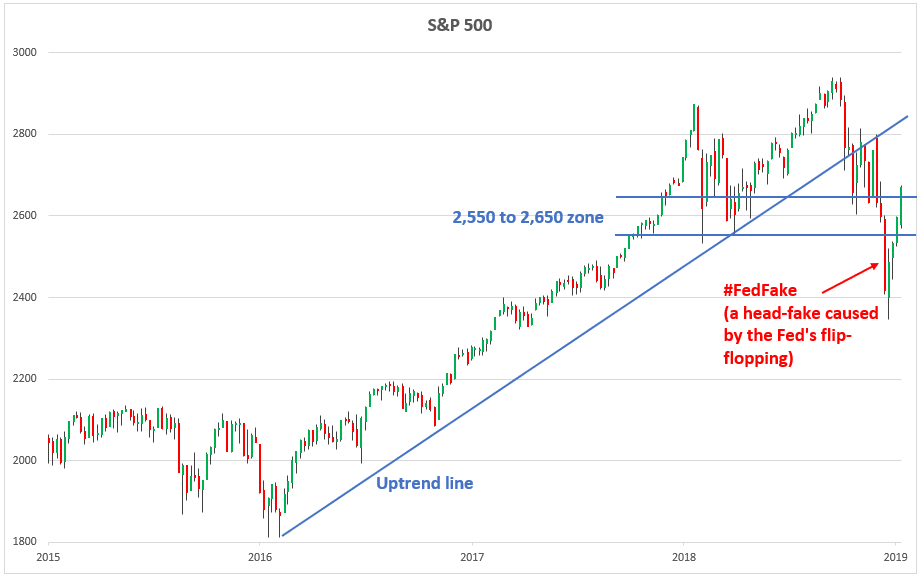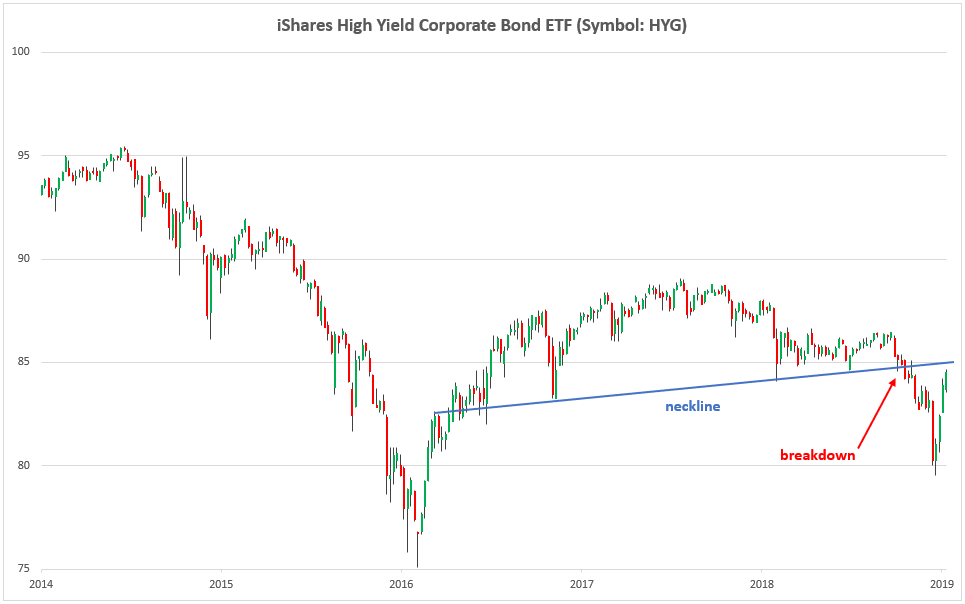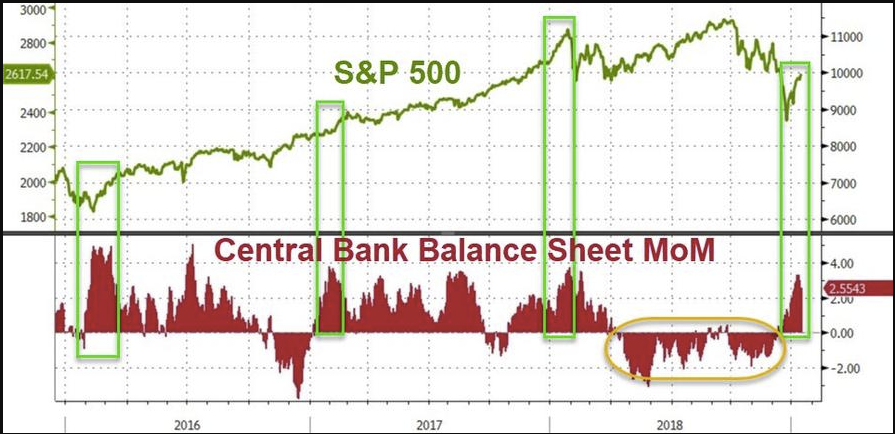The S&P 500 rose 1.32% on Friday, causing it to close above the 2,550 to 2,650 zone that I was watching for the past couple months. I was watching the 2,550 to 2,650 zone because it was an important support and resistance that formed at the early-2018 lows. In mid-December, the S&P 500 broke below this zone, which gave a bearish signal.

As a result of the steepening market sell-off, the Fed, Trump administration, and other central banks panicked. They knew what that signal meant – make no mistake about that. If action wasn’t taken, the market would have experienced a waterfall-style decline. On Christmas Eve, Treasury Secretary Steven Mnuchin called the Working Group on Financial Markets or the “Plunge Protection Team” to ask for their help to shore up the U.S. financial markets. Next, Fed chair Jerome Powell did an about face, suspiciously going from hawkish to dovish regarding future interest rate hikes in a very short period of time (clearly as a result of being threatened by the Trump administration and, likely, by Wall Street banks and investment firms). In addition, central banks outside of the U.S. started expanding their balance sheets again in order to pump more liquidity in the markets.
The central bank and government interventions caused the U.S. stock market to reverse its breakdown. The weekly chart shows how the S&P 500 reversed its December breakdown and closed back above the 2,550 to 2,650 zone. As long as the S&P 500 is above this zone, there is a bullish bias. If the index breaks back below this zone again, however, it will give another bearish signal (it’s very simple: “bullish above, bearish below”).

I’ve been discussing the recent breakdown of the high yield corporate bond ETF (symbol: HYG) and how that posed a serious risk to the stock market and economy. The bounce of the past few weeks did not cause the HYG ETF to break back above its neckline, which would reverse the breakdown that occurred a couple months ago.

The chart below from ZeroHedge shows how global central banks panicked due to the market sell-off and began to expand their balance sheets again:

In response to Friday’s market rally, I cautioned against getting excited about much more upside from here:

I am frustrated about the recent “market” action because it’s not a true market when central banks and the government are constantly intervening in it and preventing proper price discovery.